Red light therapy is a non-invasive, non-thermal therapy that is believed to be the safest treatment and has shown promising results in a variety of medical trials. Red light therapy benefits for a wide range of medical conditions have been proven by clinical studies. But is LED red light therapy safe? Are there some potential side effects that you should be aware of before treatment? In this blog, we will discuss the safety and efficacy of professional devices like Bestqool's medical red light therapy machines, and explain how you can minimize the risk of any side effects. So whether you're going to try red and near-infrared light therapy for inflammation, pain relief, and wound healing, or apply this anti-aging light therapy for collagen production and other aesthetic purposes, this article is right for you!
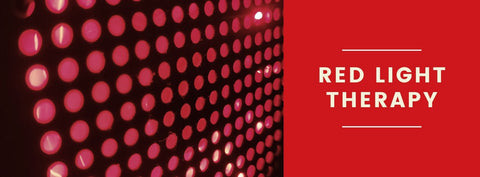
Is red light therapy safe?
Though many scientific studies and clinical reports found no adverse effects or serious complications after red light therapy, there are still reported side effects.
The reported complications with cosmetic applications of red laser therapy involve burns, infections, dyspigmentation, ophthalmic injuries, the Koerner phenomenon, scarring, prolonged erythema, acne, milia, and contact dermatitis. Considering the similarity of LED red therapy and low-level red light laser therapy in applied spectrum and irradiance levels, though, with differences in radiation properties, similar side effects may also be associated with red LED light therapy.
One study investigated the efficacy and safety of using low-intensity laser light at 650 nm for myopia control in children. The adverse events were reported as any uncomfortable symptoms, including photophobia, eye itching, burning sensation, dry eye, blurred vision, glare, dazzling, keratitis, and conjunctivitis.
In this study, low-level red light therapy was applied to treat Parkinson's disease, and the potential adverse effects were significantly higher in the low-level LED light therapy group than those in the placebo group.
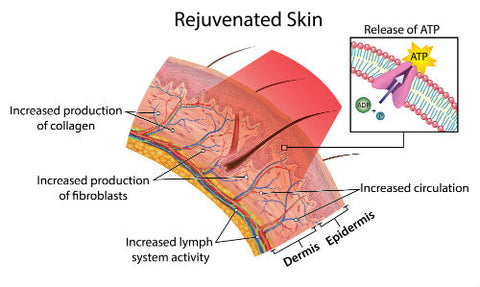
Unlike the traumatic ablative laser resurfacing and non-ablative intense pulsed light (IPL) skin rejuvenation modalities that induce secondary tissue repair by causing controlled damage to either the epidermis or the dermis, the photobiomodulation of LED red light therapy is atraumatic and bypasses the initial destructive step by directly stimulating regenerative processes in the skin. It avoids the downsides of laser treatment or IPL by using action mechanisms to increase cellular proliferation, migration, and adhesion, and promote metabolic activities. The known serious side effects of traumatic skin rejuvenation modalities, such as inflammation, unpleasant pain perception, and prolonged social downtime, are unknown in red light photobiomodulation therapy.
This study investigated the safety of light-emitting diode (LED) red light on human skin and applied a wide fluence range for all skin types. The primary outcome of the maximum tolerated dose was to find the highest fluence that did not elicit predefined adverse events, including blistering and prolonged erythema. With darker skin being more photosensitive, LED red and infrared light therapy may have differential cutaneous effects depending on race and ethnicity. It has been found that LED red light therapy is safe up to 320 J/cm^2 for skin of color and 480 J/cm^2 for non-Hispanic Caucasian patients. Some subjects receiving the maximum tolerated dose experienced a mild adverse event of hyperpigmentation, which was resolved within three months.
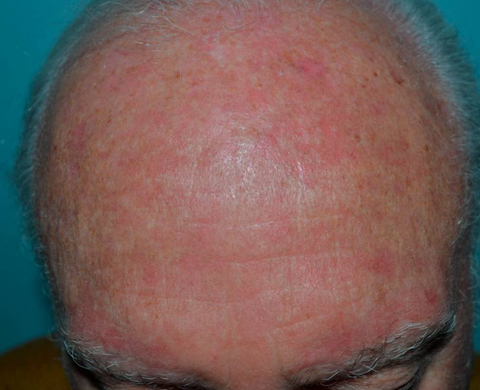
However, some may need the supplement of photosensitizers, such as 5-aminolaevulinic acid (ALA), to increase the sensitivity of light wavelengths during the photodynamic therapy. More incidences of adverse effects are reported during such treatments than during LED light therapy alone.
How to minimize the risk of side effects of red light therapy?
Red light therapy is believed to be the safest therapy, with almost no reported safety complications in current studies. However, there are some risks that could cause potential side effects, including redness, itchiness, or the main phototoxic effects, such as erythema and edema. How can we minimize the risk of red light therapy side effects? What are the precautions we can take before treatments?
First, the professional assessment ensures you are a good candidate for LED light therapy. Patients who are taking specific medications may have a higher risk of side effects. The medications that might make a reaction more severe and increase side effects are griseofulvin, sulfonamides, phenothiazines, and so on. Always consult with your physician or light therapy specialist first.
Some historical diseases may involve a second outbreak after light therapy. For example, if you have a history of herpes simplex virus outbreaks (cold sores), you may need some prescribed medication to minimize the probability of an outbreak after treatment.
Second, consult with a specialist if you are pregnant. Though there are a few studies of red light therapy for pregnancy, and they reported no observable side effects, it is true that there is a lack of systematic analysis on this safety topic.
Third, make the adjustment of irradiance and dosage based on your skin sensitivity. You can start with a lower irradiance level and increase it bit by bit by adjusting the distance from the light source before you have any uncomfortable feelings, such as headaches, itchiness, and others, or feel any intolerable heat or extreme fatigue after treatment. Do follow the instructions for the dosage each time, for which you can consult with your specialists or device manufacturers.
Third, personal protection during treatment includes protective methods for the retina and partial coverage of the sensitive skin. You can take goggles to avoid bright irradiation in the eyes.
Fourth, follow the instructions of post-care after red light treatment. Some tips for post-care include 1) avoiding direct sunlight since UV radiation can harm and irritate the skin; 2) avoiding using saunas, steam rooms, and hot tubs since heat can exacerbate swelling conditions; 3) doing a simple routine of facial cleaning and avoiding using abrasive soaps or exfoliants; 4) some moisturizer is helpful for fostering healing.
Enjoy the safety and efficacy of professional red light therapy devices of Bestqool
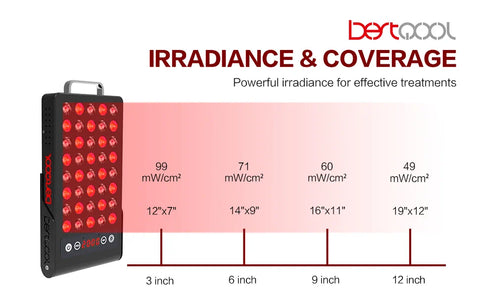
Near red light therapy is credited as the safest therapy for a wide range of medical conditions since it is non-thermal and non-invasive in nature. Yet it is necessary to choose the true medical-grade red light therapy devices that will guarantee your safety during light therapy.
All Bestqool products are truly FDA-cleared and ETL-certified for both the safety and effectiveness of your treatment. As FDA Class II medical devices, Bestqool light therapy follows the highest safety standards on the market and clinically proven design principles. With long engagement in the medical field and LED manufacturing technology, Bestqool products are equipped with a dual-wavelength mode, focusing on the most effective specific wavelengths in the narrowest band (red light at 660 nm and near-infrared light at 830 nm), cooling system for managing the heat of lights, EMF shielding that results in no EMF emitting at 3 inches, and a digital control and timer system for accurate control over treatment.
Irradiance levels are the most critical for either safety or efficacy, and Bestqool red light provides different modes of irradiance. You can adjust irradiance levels accurately according to your skin's sensitivity. Higher irradiance usually means more efficient treatments. Bestqool LED light therapy are able to reach an irradiance as high as 100 mW/cm^2 of direct output. Using 10 minutes of Bestqool products is equal to 20 minutes of others. With a three-year warranty comes together all Bestqool products, which sets up the longest standards and shows Bestqool's trustworthiness for delivering the best red light therapy at home for our clients.



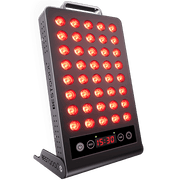









 Small
Small

 Moderate
Moderate

 Moderate
Moderate

 Moderate
Moderate

 Full
Full



